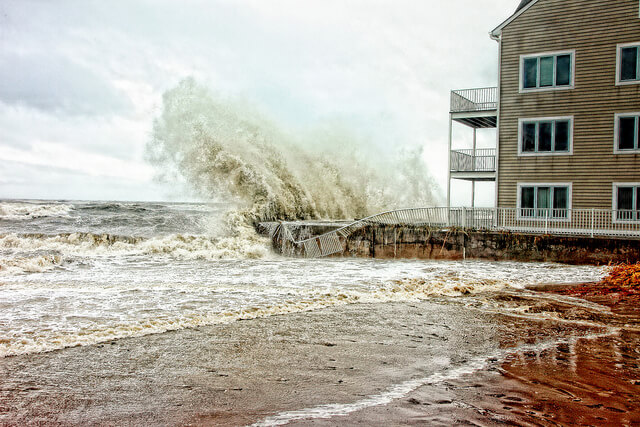NOAA predicted that during this six month hurricane season, which started on June 1, the Atlantic will produce five to nine mighty storms. A total of 10 to 16 named storms, tropical-strength or stronger, will likely cross the basin, threatening people, real estate, crops and energy resources in the U.S., Mexico and the Caribbean. Of those, one to four may become major hurricanes with winds of 111 mph or more.
Over 80 million people can be affected. Atlantic and Gulf coast residents need to prepare. Along these coasts there are more than 6.6 million homes with an estimated reconstruction cost of 1.5 trillion.
It is costly. Last year the U.S. was hit by three major hurricanes that helped drive total losses to more than $215 billion. Overall 17 named storms formed, which fell in line with NOAA’s prediction of 11 to 17.
Be Prepared. The best thing that you can do during hurricane season is be prepared. See these tips so that you will know what to do.
What can you do now?
- Know your area’s risk of hurricanes and sign up for your community’s warning system.
- Based on your location and community plans, make your own plans for evacuation or sheltering in place, and become familiar with your evacuation zone, the evacuation route, and shelter locations.
- Gather needed supplies for at least three days. Don’t forget the needs of pets.
When a hurricane is 36 hours from arriving?
- Turn on your TV or radio in order to get the latest weather updates and emergency instructions.
- Restock your emergency preparedness kit.
- Plan how to communicate with family members if you lose power.
- Review your evacuation zone, evacuation route and shelter locations. Plan with your family.
When a hurricane is 18-36 hours from arriving?
- Bookmark your city or county website for quick access to storm updates and emergency instructions.
- Bring loose, lightweight objects inside that could become projectiles in high winds; anchor objects that would be unsafe to bring inside and trim or remove trees close enough to fall on the building.
- Cover all of your home’s windows by using storm shutters or plywood.
When a hurricane is 6-18 hours from arriving?
- Turn on your TV/radio, or check your city/county website every 30 minutes in order to get the latest weather updates and emergency instructions.
- Charge your cell phone now so you will have a full battery in case you lose power.
When a hurricane is 6 hours from arriving?
- If you’re not in an area that is recommended for evacuation, plan to stay at home or where you are and let friends and family know where you are.
- Close storm shutters, and stay away from windows.
- Turn your refrigerator or freezer to the coldest setting and open only when necessary.
When a hurricane hits?
- If told to evacuate, do so immediately. Do not drive around barricades.
- If sheltering during high winds, go to a FEMA safe room, ICC 500 storm shelter, or a small, interior, windowless room or hallway on the lowest floor that is not subject to flooding.
- If trapped in a building by flooding, go to the highest level of the building. Do not climb into a closed attic. You may become trapped by rising flood water.
- Do not walk, swim, or drive through flood waters. Turn Around. Don’t Drown! Just six inches of fast-moving water can knock you down, and one foot of moving water can sweep your vehicle away.
What can you do afterwards?
- Be careful during clean-up. Wear protective clothing and work with someone else.
- Avoid wading in flood water, which can contain dangerous debris. Underground or downed power lines can also electrically charge the water.
- Save phone calls for emergencies. Use text messages or social media to communicate with family and friends.
- Document any property damage with photographs. Contact your insurance company for assistance.
There has already been a named storm on the Atlantic coast this season; Tropical Storm Alberto brought deadly flooding and mudslides to the Florida Panhandle and the Southeast early in May. On the Pacific coast, Aletta quickly became a category 4 hurricane, but did not hit land. According to weather.com Hurricane Bud is currently weakening to a tropical storm, and is set to approach Los Cabos on Thursday.
For more tips on what to do before, during, and after a hurricane visit https://www.ready.gov/hurricanes, and for more information on NOAA’s 2018 hurricane predictions see the full article from PropertyCasualty360.








